

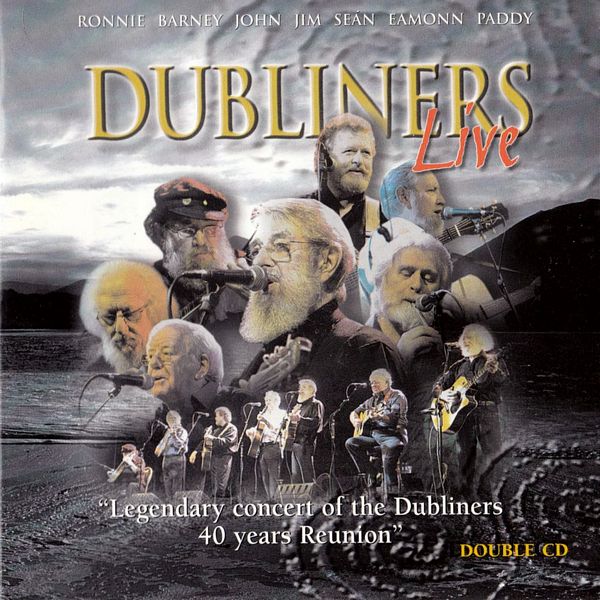 |
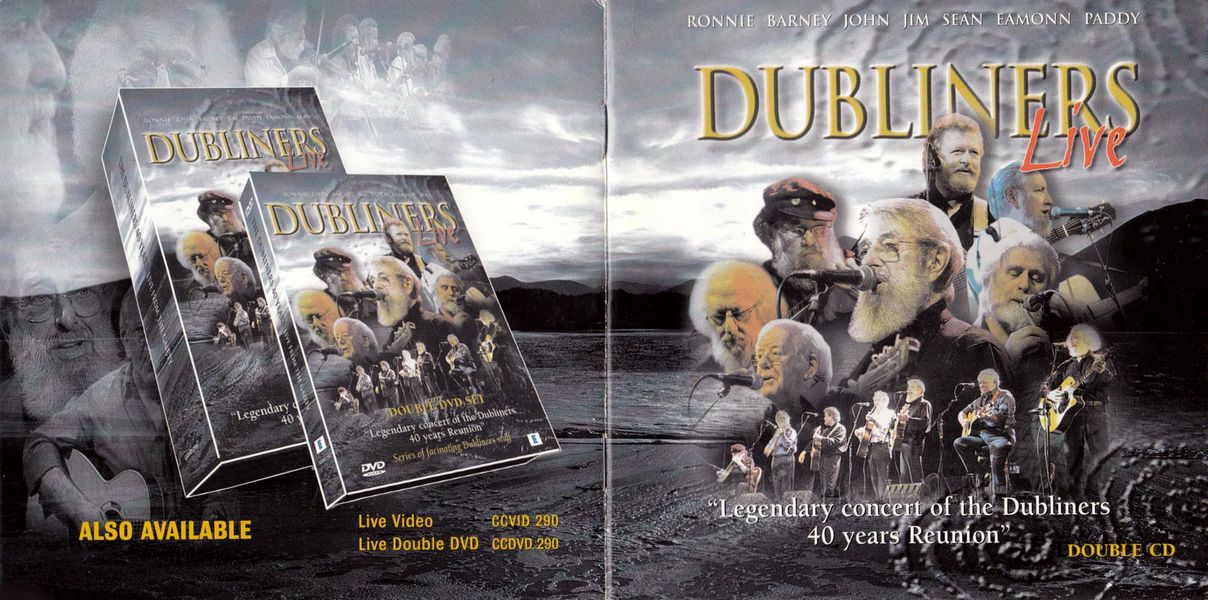
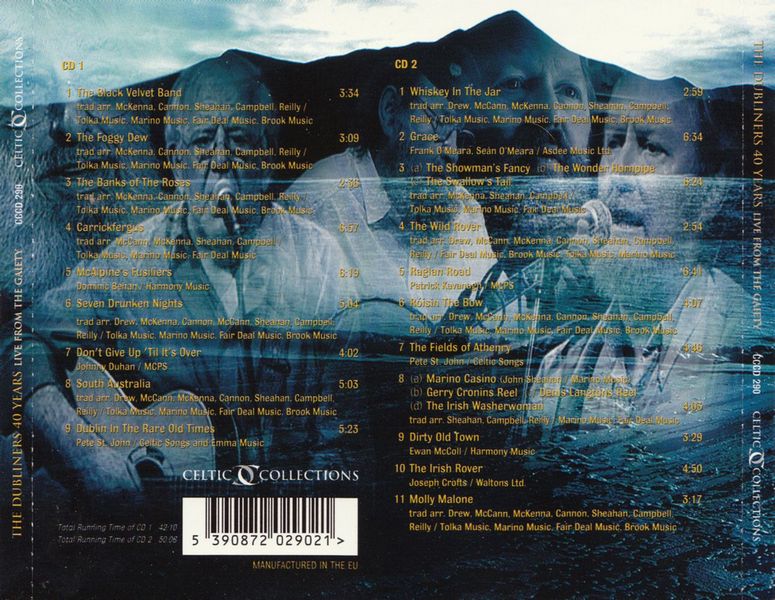 |
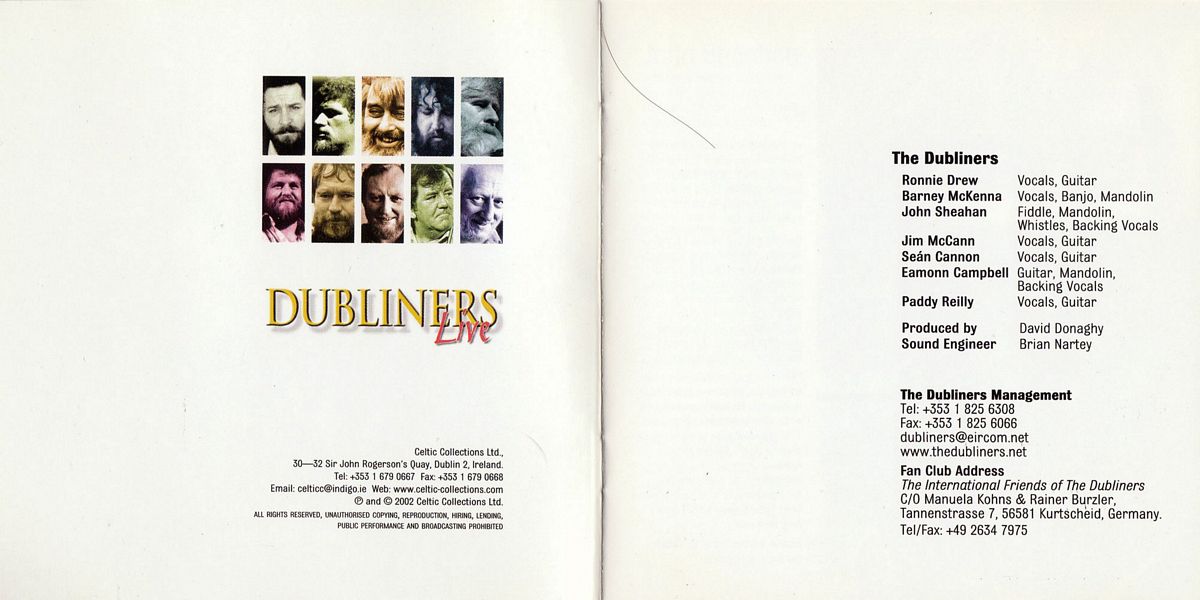
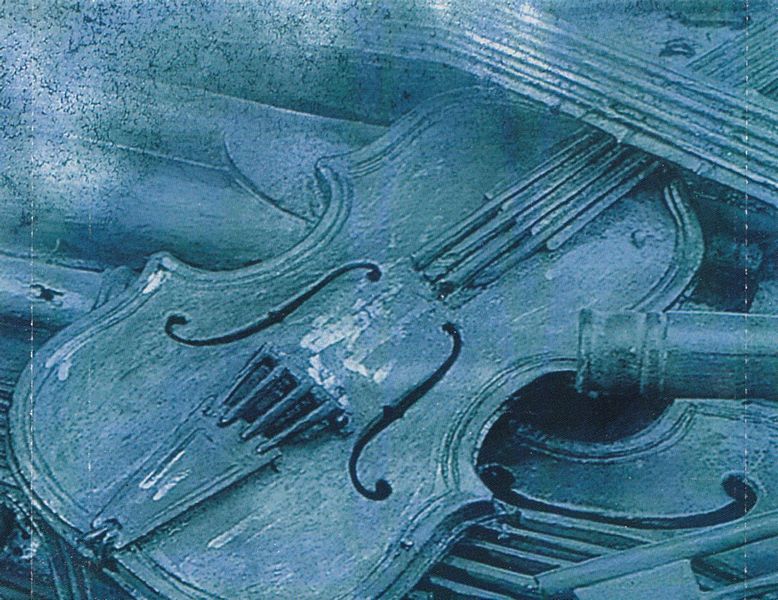 |
Sleeve Notes
Ronnie Drew
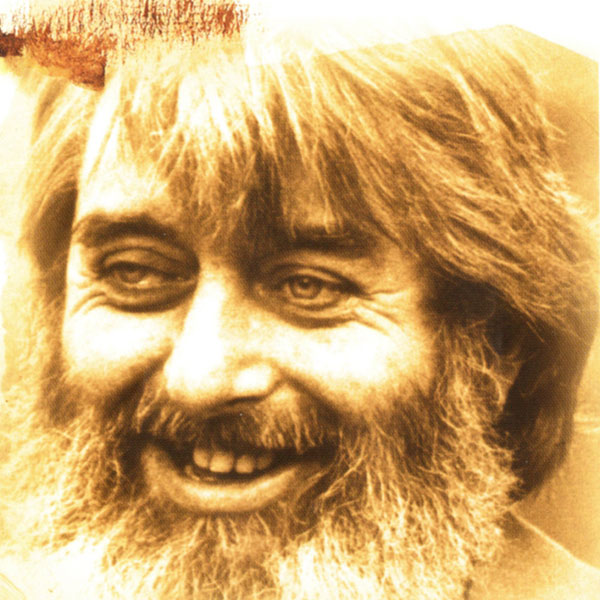
He was the first one of the Group and sometimes affectionately referred to as "our Daddy" by the rest of the band. He was the first one of the Group to appear on the professional stage Ronnie realised that he wasn't cut out for a nine to five job, especially of the a.m. variety.
He emigrated to Spain where he lived for three years During his time there, he taught English, learned Spanish in the process, and took lessons in the art of flamenco guitar.
On his return to Dublin, he met up with renowned actor, John Molloy, and worked with him in various theatrical roles, singing, acting and playing flamenco guitar. The discipline of this introduction to show business was later to prove of immense benefit when The Dubliners evolved.
Various attempts have been made to describe Ronnie's unusual voice. One writer described it as, "The sound of coke being crushed under a door". Ronnie himself remains uncertain "I'm not sure sometimes", he says, "whether it's a blessing or a curse, but I've been getting away with it for a longtime now".
Ronnie left the Group in 1995 to pursue a solo career.
John Sheahan
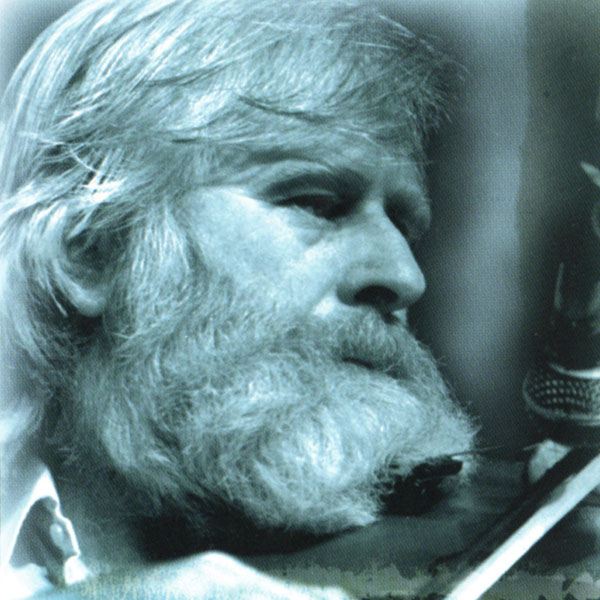
Sometimes referred to as, "The quiet one", John is the only member of the Group to have had a formal musical education.
John's introduction to music began at school with the Christian Brothers in Marino. Dublin, where he learned the tin whistle. This experience was shared with Paddy Moloney, now of Chieftains fame, and another classmate, Liam Rowsome, fiddle playing son of the legendary piper, Leo Rowsome. Soon he was to transfer the musical knowledge gained on the whistle to a fiddle he found lying around at home. Enthusiastically supported and encouraged by his parents, he attended the Municipal School of Music in Dublin where he studied classical violin for more than five years. During this time he continued to maintain his interest in Irish traditional music.
Over the years, John has been in steady demand as a studio musician on other artists' records, including those of Kate Bush, Terence Trent D'Arby and Rod Stewart.
In more recent times John has gained recognition as a composer. Many of his compositions have strong characteristics of baroque music and several of these have been arranged for the RTE Concert Orchestra His most famous piece is the Marino Waltz.
Luke Kelly
Born 1940 — Died 1984
The Song of A Bird Alone
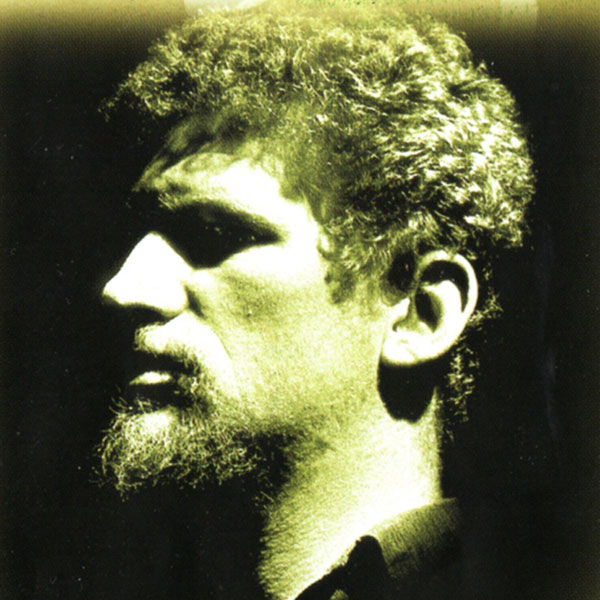
Luke Kelly lived much of his life among his own — and yet he too knew a kind of exile: it was the spiritual exile of one who wished for a better world.
Luke found expression for his loneliness. For him singing was as essential as it was for the American blues' singers who found themselves "lonely and afraid in a world they never made". Luke brought home to you that singing had been man's primal mode of expression.
Better than most, Luke Kelly knew what was happening in his own field — and indeed in the fields around it — but he was his own man. Ewan McColl may have inspired him — but only to go his own way. It may seem paradoxical that such a 'bird alone' should gain fame with a group — but The Dubliners were less a group than a meitheal. The Dubliners were all individualists — Luke, Ronnie, Ciarán, John, and Barney were leaves from different trees blown together by the wind that changed the world of music a generation ago. What they had most in common was artistic honesty.
Luke's ambition was to express "the song of his loneliness". He succeeded as much as a mortal can — and in doing so he became an immortal.
Con Houlihan,1984
Barney McKenna
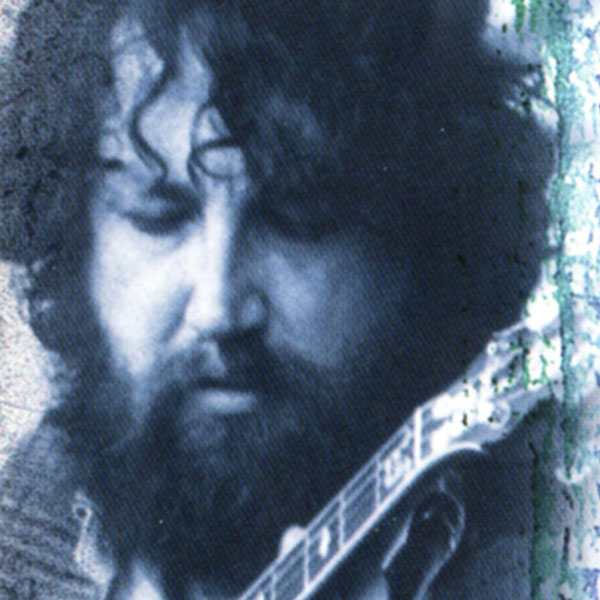
Affectionately known to his friends as Banjo Barney from Donnycarney since he's seldom seen without his beloved instrument.
Barney is unquestionably a natural musician and banjo playing is not only his profession but his hobby too. Authoritative observers throughout the world consider him the best banjo player ever to have emerged from Ireland. In 2001 his contribution to the world of traditional music was officially recognised by The Galway School of Irish Traditional Music who presented him with their Hall of Fame award.
There's a strange kind of logic that runs through much of Barney's conversation and the rest of the band have coined a new word to describe some of his statements — Barneyisms! Once on a particularly turbulent flight to London, Barney was unusually nervous. John Sheahan who was sitting beside him said,
"Listen, Barney, you might as well try to relax — after all, you're not going to go until your number is up", to which Barney replied, "That's all very well, but suppose the pilot's number is up, we'll all have to go with him".
On another occasion, Barney was driving Finbar Furey to Dublin. Finbar was rather uncomfortable with Barney's style of driving and told him to slow down and take it easy — to which Barney replied, "You think this is bad. You should be with me when I'm on my own!" With that kind of humour, you can be sure there's never a dull moment when you're in Barney's company.
Ciarán Bourke
Born 1935 — Died 1988
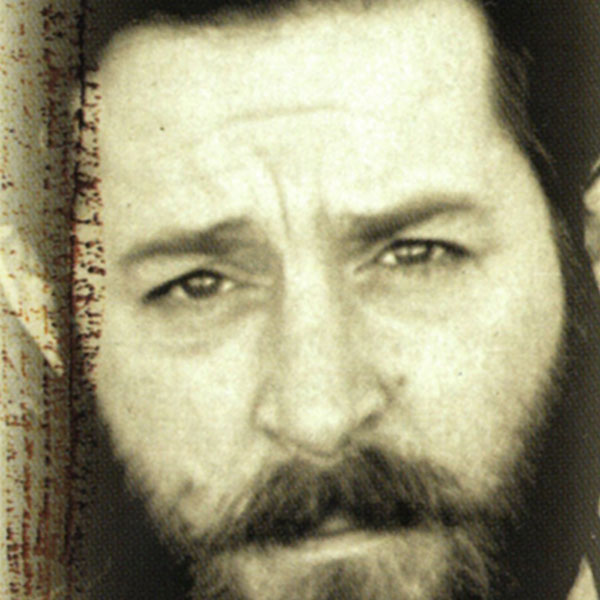
Ciarán Bourke loved porter. He sang about it, indulged in it and when he built an extension to his Dublin Mountain home, he embedded 2,000 bottles (empty) in a decorative porch. He laughed about his fondness for the black stuff. Ciarán was the scholar of The Dubliners. His father wanted him to have a degree from UCD. He opted out after completing four years in the Faculty of Agriculture.
In the 60s, Ciarán Bourke was one of those rare people who chose the alternative life when it wasn't so fashionable. Ciarán loved the Irish language and it was from his grand voice that we first heard the haunting Se Fath mo Bhuartha. He was a fine musician too — tin whistle, harmonica and guitar. He was the melodic chord to Ronnie's soul songs and Luke's passion.
He was a compassionate man who never dwelt on the material side of life. Life was for living and loving and helping others. Fate dealt a cruel blow in 1974. Ciarán collapsed on stage at Bournemouth, having suffered a brain haemorrhage. He was never to perform again. He continued to take an active interest in the Group, and contributed to The Dubliners' musical development until his death in 1988.
Bob Lynch
Born 1935 — Died 1982
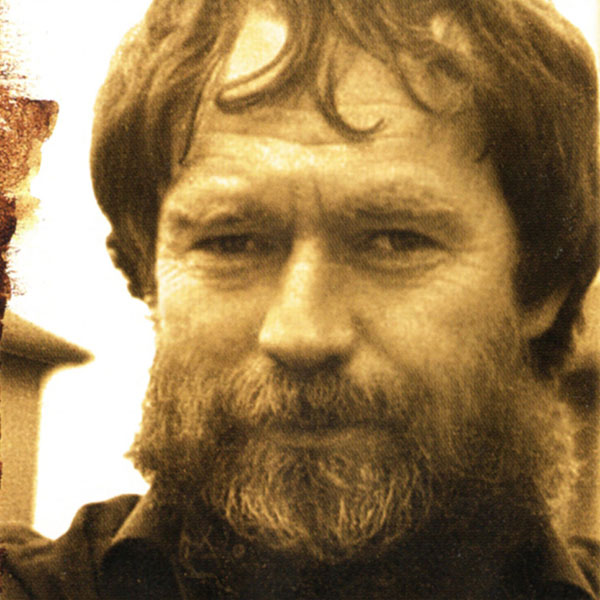
Bob Lynch was an established solo artist in the early 60s, playing the clubs around Dublin when John Sheahan was playing fiddle with various ceili bands. Bob was impressed with John's fiddle playing and immediately saw the potential of combining their talents as a duo. He invited John to his house to explore their musical possibilities. They immediately struck up a strong rapport and Bob was so impressed with their new sound that he put down his guitar and straight away phoned his agent, Peggy Jordan. He asked her to listen while John played a tune — possibly the first ever telephone audition. Bob finished his conversation and announced to John, "we have three gigs next week as a duo."
When Luke Kelly temporarily left The Dubliners in 1963, the rest of the boys invited Bob and John to augment their shows by filling in during their "porter breaks", and by a process of natural organic evolution they just stayed on. About a year later, Bob made a decision not to give up his day job and returned to a successful solo career.
Jim McCann
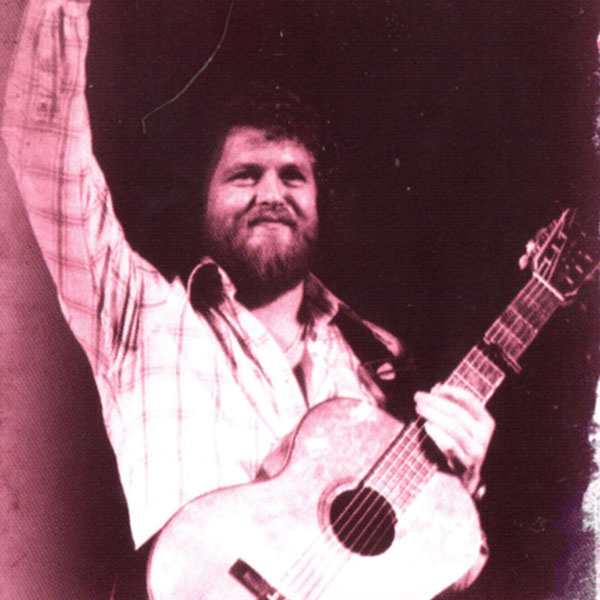
Having traded the life of a medical student for that of a travelling musician in the early 60s, Jim McCann is one of Ireland's longest serving and best loved entertainers. It was while working in Birmingham on a Summer holiday in 1964 that he
became interested in folk music and began performing as a 'floor singer' around the many folk clubs in that area. On his return to Ireland he joined the Ludlows who were among the top Irish folk groups at that time.
Jim then embarked on a solo career, which involved television shows including The McCann Man. Luke Kelly appeared as a guest on this show. It was during the run of this show that Jim was asked to temporarily join The Dubliners because of Ciarán Bourke's illness. When Ronnie Drew decided to go solo, Jim was invited to become a permanent member of the Group. Jim toured the world with The Dubliners throughout the 70s and since then his career has gone from strength to strength. He has made several TV specials, successful albums and singles; his most famous being Grace which remained in the Irish charts for 36 weeks.
Jim left The Dubliners in 1979 to pursue a solo career.
Seán Cannon
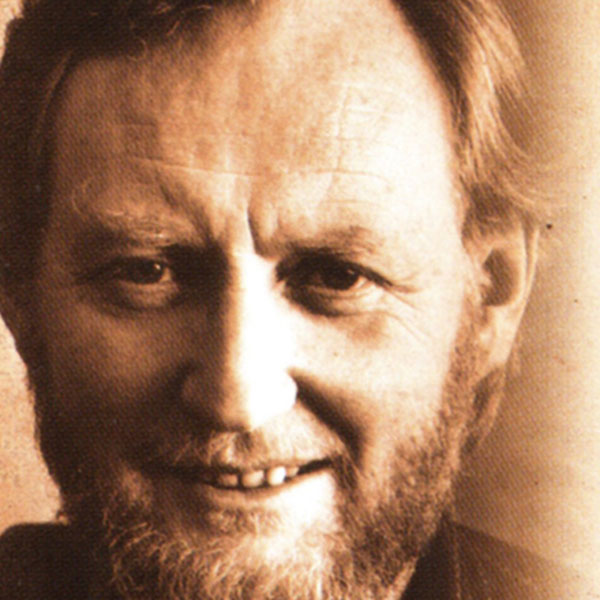
Seán was born in Galway but has spent a good deal of his adult life in England. His wanderings began in the early 60s when he moved to Germany for a year with a view to developing his linguistic ability. During his time there he became interested in folk music.
His next move was to Switzerland where he appeared on several radio and television stations as well as acquiring an excellent command of the French language. With rucksack and guitar in tow, Seán then moved to Spain where he taught both German and French, acquiring in the process fluent Spanish to add to his already established multilingual repertoire. Eventually, he was to settle in England in the late 60s and went on to become a renowned solo artiste, playing the many Folk Clubs that had mushroomed during these folk revival years.
Seán had been a close friend of The Dubliners for many years and appeared with them as a guest artist on a number of occasions before accepting an invitation to join them in the autumn of 1982.
Eamonn Campbell
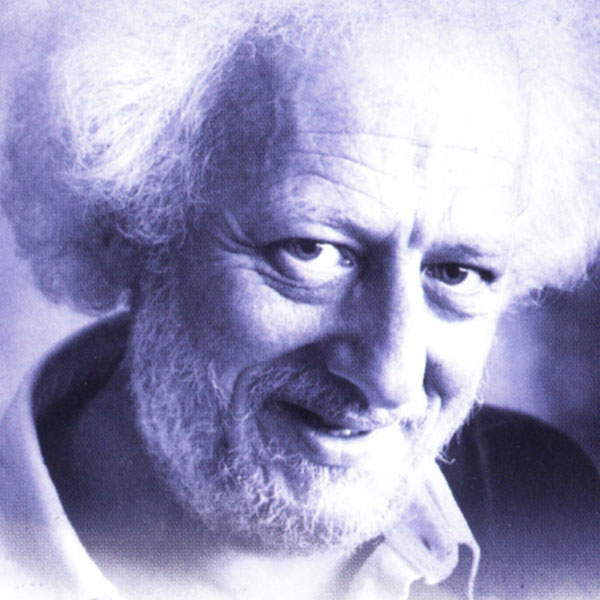
Eamonn began playing professionally in 1965 with Dermot O'Brien and The Clubmen. During a U.K. tour in 1967, The Clubmen shared the bill with The Dubliners and, during the nightly sessions that followed each concert, a relationship developed between Eamonn and The Dubliners, which led to a lasting friendship. Over the years, he has made numerous guest appearances with the Group.
Eamonn is regarded as Ireland's most successful record producer, having produced hits for Paddy Reilly, Foster and Alien, Brendan Grace, Philomena Begley and, in recent years, he has produced records for American country singer Billy Jo Spears. In 1987 he produced The Dubliners' 25th Year Celebration album and it was Eamonn's suggestion that The Dubliners and The Pogues record a few tracks for the album. This resulted in their hit single, The Irish Rover.
Shortly afterwards, with the opportunity to take part in live concerts, Eamonn cut down on his studio work and joined the Group on a full-time basis.
Paddy Reilly
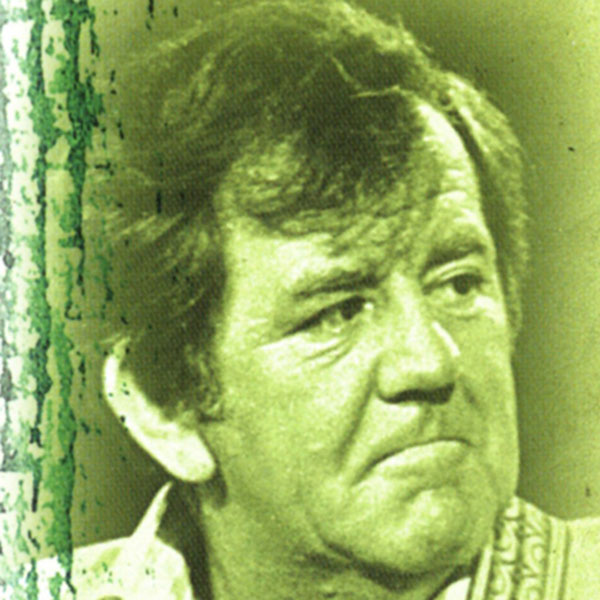
Paddy Reilly, "the newest Dubliner" has been a close friend of the Group for many years.
As a teenager, his first musical influence was opera. However, it was his attendance at a Dubliners concert in the early 60s that attracted him to the world of folk music and he always cites Luke Kelly as the strongest single influence on him as a solo singer.
What started off, as a hobby — learning and singing folk songs -soon became his profession. His popularity grew rapidly and over the years he has earned the reputation of being Ireland's best loved folk singer. He has that special quality of putting his own personal stamp on a song, making it the definitive version. Paddy has toured extensively and performed in all the major concert halls around the world, from the Sydney Opera House to Carnegie Hall. He has recorded over 15 albums and has had major single hits with The Town I Loved So Well, The Flight of Earls and The Fields of Athenry which remained in the Irish charts for a record 100 weeks.
The social and musical lives of Paddy Reilly and The Dubliners have been closely interwoven over the past 35 years. He has guested with the Group on numerous occasions over the years. Eamonn Campbell has produced most of his albums and John Sheahan has performed as studio musician on many of them.
When Ronnie Drew left The Dubliners at the end of 1995, Paddy Reilly joined the Group.